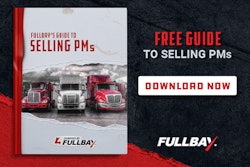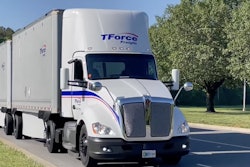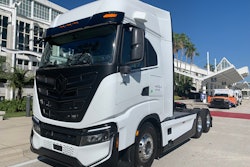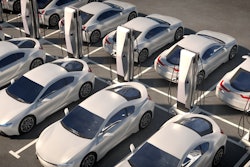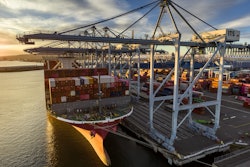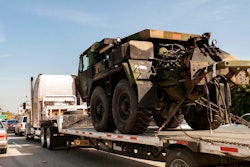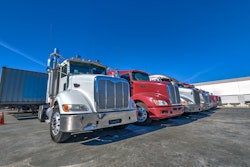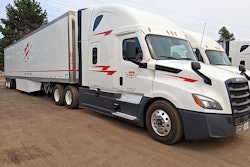Critical mass is a physics term describing the point at which there is sufficient density to attain a sustained nuclear chain reaction. It gets adapted to describing any situation where sufficient interest is needed to make something take off, like a new business, a new technology, a new social movement, etc.
New businesses and new technologies are challenged to get to critical mass. There may be sufficient investment capital, but insufficient positive cash flow to sustain a company or technology as it tries to win market share.
Competition may intercede diluting the potential market to the point that critical mass can’t be achieved. The customer base may be spread too thin for all competitors to achieve success. That situation leads to bankruptcies and mergers and acquisitions until the competitive marketplace herd is thinned sufficiently to allow a few choice winners to succeed.
Look at heavy-duty truck production in North America and you will see a market that buys between 200,000 and perhaps 340,000 trucks per year. Manufacturers along the entire supply chain set up production lines for those expected volumes.
When the demand is low, plant production lines are slowed, plant personnel are furloughed or laid off, supply chains see cutthroat pricing, etc.
When demand is at peak, plants institute multiple shifts, human resources offices are stressed to quickly hire and train as many people as possible, the supply chain is challenged because not all the parts makers can ramp up in unison, and shipping is challenged to move all the parts and finished products.
These are typical indicators of a cyclical market, and is termed market volatility.
Ideas also are cyclical. Electric trucks were actually market leaders at the start of the 20th Century before internal combustion engines and fossil fuels captured the market. One of electric trucks’ big competitors was actually steam-based vehicles. In the 2020s electric trucks are back in vogue along with a host of alternative fuel systems including renewable diesel, renewable natural gas, bio-gas and hydrogen. All these powertrain solutions are competing for that elusive 200,000 to 340,000 vehicle per year market share.
What is the minimum production capacity needed for a truck maker to reach critical mass? It depends on a lot of factors. If the market can support a premium price for a truck, as few as 1,000 units per year might represent critical mass worthy of making the capital investment. More competitively priced products that cannot capture a premium price require more units per year to be considered viable. This might be 10,000 units or more per year.
Some of the new entrants to heavy-duty truck manufacturing are forecasting plant production rates of 50,000 units per year or more. That represents perhaps 16% to 25% of the available market in all types of heavy-duty trucks. A volume of 50,000 vehicles in one configuration per year might represent nearly an entire market for specific vocational segments like long-haul sleepers, day cabs, specialty vehicles like refuse haulers, cement mixers, etc.
A few years ago, those puffy optimistic goals were stated as 100,000 trucks per year by at least two of the one-trick pony start-ups. I’m glad to see some moderation in the planning.
Let’s assume that critical mass for a current diesel-based truck in the competitive long-haul sleeper space is 10,000 units per year for one manufacturer. Looking at the manufacturing space near the end of 2024, there were perhaps 14 brands in that heavy-duty freight hauling space: Paccar (Kenworth and Peterbilt), Volvo (and Mack), Daimler Trucks North America (with Western Star), International, Tesla, Nikola, Lion Electric, Hyundai, BYD, Hyzon, and Xos. Still more OEMs have their eyes set on the U.S. market. Some of these companies have more recently entered into bankruptcies or faced other financial setbacks.
It is also fair to say that each of these major brands has their own proprietary product technology. With some exceptions like shared transmissions, shared engines, shared suspensions, etc. nearly all of these major brands are bringing their own proprietary, specific technology to the table.
These 14 companies are competing for a fairly small market share. If all 14 were to successfully reach critical mass, that would represent a whopping 140,000 units per year, representing about 50% of a typical average year’s sales. If one, or two of those manufacturers are more successful than the others, capturing 50,000 units per year sales, that leaves the other 12 to fight for scraps.
Few of these OEMs will have their sales achieve critical mass.
Timing is another consideration. Truck markets don’t typically just suddenly appear. A new model truck goes through a sales ramp-up that can take years to get to the planned production rate needed for critical mass. There are examples in the past where new, revolutionary products had stellar market share growth, exceeding plans. But those are elusively rare.
Predicting the winners and the losers is, well, gambling.
Industry consolidation will occur. Some technologies will be less successful and not reach critical mass. Some companies, even with successful technologies, may not achieve critical mass sales because of the large number of competitors muddying up the market. Some will have poor timing of introductions.
The market will ultimately decide which companies and which technologies are in greater demand. But that is a journey, not a destination.
As an example, oil-fed steam power eventually supplanted wood and coal to power trains, but that win was short lived as a new technology, diesel-electric engines, sprang up and completely replaced steam in roughly 20 years. Diesel was introduced for cars. Where did that market go? Natural gas engines in trucks were going to take off after 2010, perhaps now they finally will.
New technologies can be surprising, if they have clear advantages. Even when they are more capital intensive, if the net cost of ownership, or a new term, the net complexity of ownership is obviously less.
Those early diesel-electric trains, individually, could not compete with the big steam engines, but innovators quickly figured out you could link several of them together without increasing the size of the crew, you could run them much farther between fuel stops because they did not need water every 100 miles, maintenance was much simpler and much less costly, and uptime was better. Those and many other factors cemented steam-powered engines to history. Yes, the new diesel-electrics were more costly to buy, at first. Yes, individual performance of the diesel-electric engines was less advantageous, at first. Those companies that had the vision to see the potential of diesel-electric engines reaped the rewards of switching quickly from steam-powered trains. The market spoke in volumes once the early adopters proved the technology’s potential.
It seems inevitable that future truck manufacturing is going to see industry consolidation around a smaller number of technologies and companies. The market is just not big enough to support 14 or more manufacturers. Some of the smaller OEMs may survive making niche specialty vehicles for specific marketplaces. There is no shortage of niche markets in the heavy-duty truck world. But those vehicles will need to be able to capture premium pricing, reducing the volume threshold for critical mass.
Which technologies will win out in the long run?
The ones that:
- Are clearly less complex
- Are less costly over their period of first ownership
- Can sustain their residual values longer
- Are in demand in the used vehicle market
- Have reliable infrastructure
- Have less volatile energy costs
- Have better uptime
- Have multiple variants for different markets
- Are less expensive to build
The freight truck technology Messy Middle will resolve itself in the next decade. There may be some surprises in store such as from the introduction of autonomous vehicle technology, or far reaching ones such as viable inexpensive fusion power.
Which technologies and companies will achieve critical mass in the truck market?
Roll those dice.



